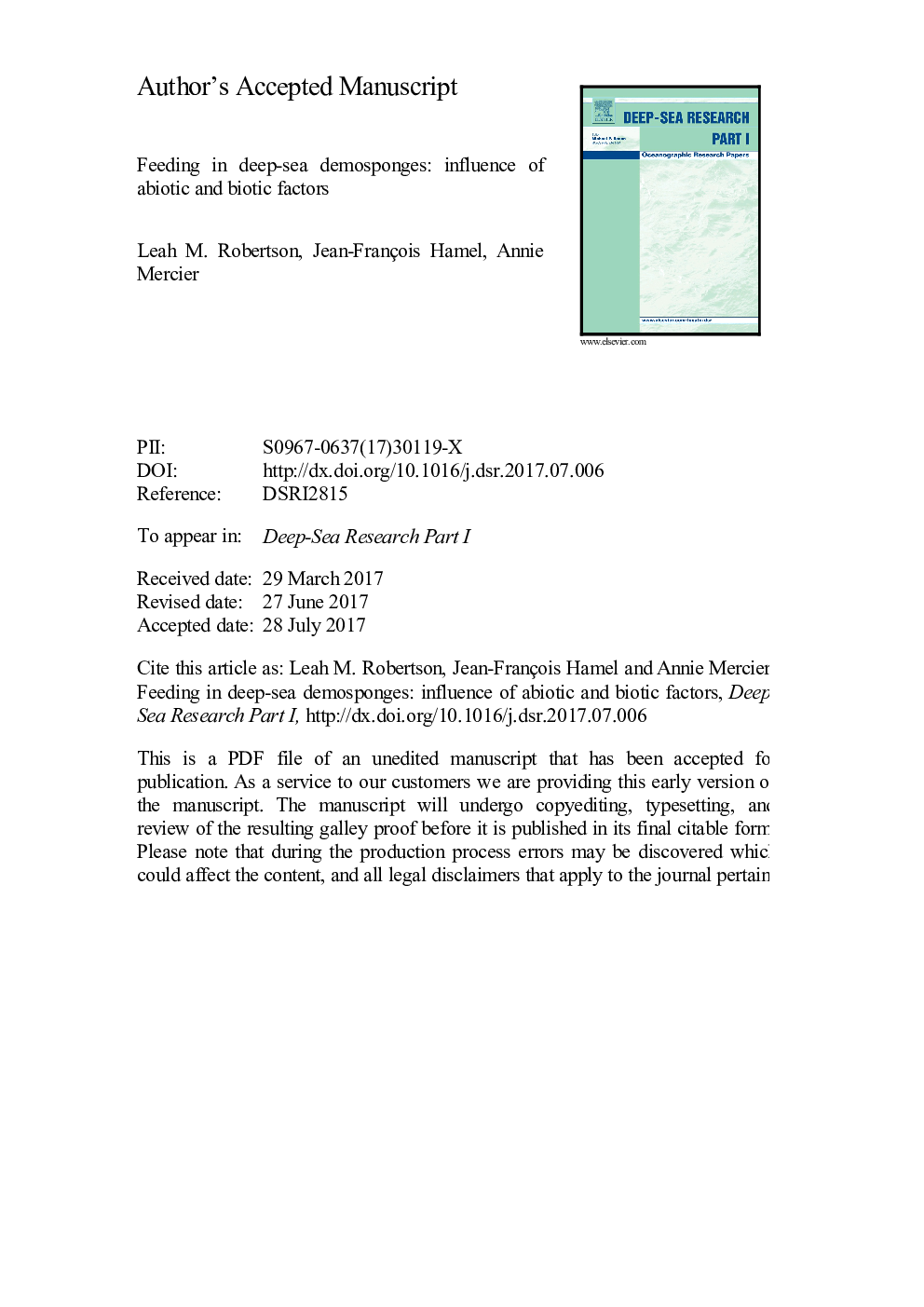| Article ID | Journal | Published Year | Pages | File Type |
|---|---|---|---|---|
| 5764665 | Deep Sea Research Part I: Oceanographic Research Papers | 2017 | 33 Pages |
Abstract
In shallow benthic communities, sponges are widely recognized for their ability to contribute to food webs by cycling nutrients and mediating carbon fluxes through filter feeding. In comparison, little is known about filter feeding in deep-sea species and how it may be modulated by environmental conditions. Here, a rare opportunity to maintain live healthy deep-sea sponges for an extended period led to a preliminary experimental study of their feeding metrics. This work focused on demosponges collected from the continental slope of eastern Canada at ~ 1000 m depth. Filtration rates (as clearance of phytoplankton cells) at holding temperature (6 °C) were positively correlated with food particle concentration, ranging on average from 18.8 to 160.6 cells mlâ1 hâ1 at nominal concentrations of 10,000-40,000 cells mlâ1. Cell clearance was not significantly affected by decreasing seawater temperature, from 6 °C to 3 °C or 0 °C, although two of the sponges showed decreased filtration rates. Low pH (~ 7.5) and the presence of a predatory sea star markedly depressed or inhibited feeding activity in all sponges tested. While performed under laboratory conditions on a limited number of specimens, this work highlights the possible sensitivity of deep-sea demosponges to various types and levels of biotic and abiotic factors, inferring a consequent vulnerability to natural and anthropogenic disturbances.
Related Topics
Physical Sciences and Engineering
Earth and Planetary Sciences
Geology
Authors
Leah M. Robertson, Jean-François Hamel, Annie Mercier,
